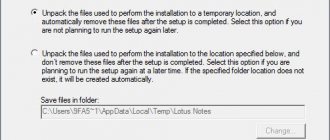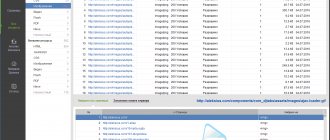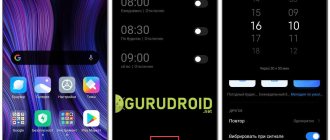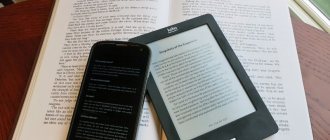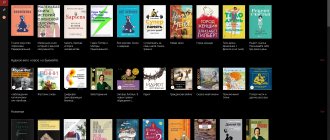Cool Reader is a multifunctional application designed for reading e-books. It was created specifically for literary texts. If we literally translate the name of the program, it will sound like “Cool Reader”. This indicates that the “development” is of very high quality and has great capabilities.
Many lovers and lovers of reading books in electronic format read voluminous books (novels, articles, and so on). The Coolreader application is indispensable in such cases.
Installing Cool Reader
The application is available in the following versions:
- On a personal computer (laptop);
- On Android.
Before proceeding with the installation, you should decide on which device you need to install Cool Reader.
On PC (Windows systems):
Installing on systems like W. is very simple:
- Download program.
- Click the “install” button.
- Wait for the installation to complete.
- You can use the program.
On Android:
- Download the file to your phone (ISO and other extensions suitable for your phone).
- Install the application on your phone
- The WAKE_LOCK extension is required (increasing the backlight time).
You can watch more detailed video instructions for installation and use here.
On a computer (Linux system):
- To begin, you need to press three keys in turn: ctr, alt, del.
- Ctr + c (copy) these lines: sudo add-apt-repository ppa:vovansrnd/coolreader;
- sudo apt-get update; sudo apt-get install cr3.
- Having completed the previous step of the algorithm, you need to open the downloaded file with the exe extension (application installation file).
- Click “install”.
- After the program is installed on your system, click finish and you can use the program.
Cool Reader for Windows
Cool Reader is a free program for reading e-books. The program is very convenient and will be especially useful for those who have to read a lot from the screen.
Cool Reader allows you to open files in FB2, TXT, RTF, DOC, TCR, HTML, EPUB, CHM, PDB, MOBI formats. Using the program you can also view and unpack RAR, ZIP, HA, ARJ, LHA, LZH archives.
You can view the text either as a continuous scroll or as a regular book. You can also customize the background, select a font, styles for text, and add hyphens. You can read the book in full screen or windowed mode. Using the SpeechAPI 4.0 and 5.1 voice engine will ensure the book is read aloud. There is also a text search, night mode and a bookmarking function.
Download the archive with the program from Yandex.Disk using the link below.
Cool Reader does not require installation - just extract the files from the archive and run the file with the .exe extension.
The main program window opens. To change the language, click on the arrow in the upper right corner and select “Settings” from the list.
Then click on the “Interface language” field and select “Russian”. To return to the previous window, click on the arrow in the upper left corner - “Back”.
Now in your usual language, click on the arrow in the upper right corner again. Here you can enable/disable night mode, read the user manual and exit the program. Select the “Settings” item.
These are the basic settings of the program. Here you can change the interface theme, select a language, enable/disable full-screen mode, adjust the screen backlight time and set its brightness. Just click on the item you want to change, and in the next window, use a marker to mark the desired parameter.
We return to the previous menu - the “Back” arrow on the top left. To open a book or file stored on a computer, in the “Open File” window, select the disk partition on which it is saved. Next, we look for the desired folder in which the document or book is stored. Then click on it with the mouse and it will open in the program.
In book reading mode, the “Menu” is located at the top. Here you can go to settings, enable/disable night mode, view the contents, go to a page, open bookmarks, find a word in the text, enable reading a book out loud, and scroll through pages. By clicking on the small arrow at the bottom right, the same menu will open, where you can also go to the desired position in %.
In reading mode, go to “Settings”.
The first item is “Fonts and Colors” – click on it. Here you can select the font type and its size, enable anti-aliasing for text, select the color of the text, background, background texture, and adjust the cover color. Click "Back".
Now go to “Interface Settings”. Here you can choose which side the toolbar will be located on and enable/disable the scroll bar.
To configure the Read Aloud Voice option, the voice engine and voice must be set to default in System Preferences. For example, it only reads English text. To read Russian-language texts, you need to download and install an additional speech engine from the Internet, and then in the settings select this engine and voice to use by default.
Let's go back.
The “Control” item is only suitable for touch screens. Conventionally, the screen is divided into 9 zones, each reacts to single and double finger presses. Here you can configure what action will be performed when you press your fingers on a specific area.
In the “Page Options” item, you can configure the book viewing mode, set the line spacing and page indents. Flipping animation is a way of turning the pages of a book.
The “Text Formatting” item will allow you to enable/disable hanging punctuation and kerning. You can also select a dictionary for hyphenation in the text.
Download the Cool Reader program and customize it for yourself - so that it is convenient for you to turn pages, the background is pleasant, the text is easy to read, then the strain on your eyes will be minimal. I think now you will enjoy reading books and documents.
Rate this article:
About the author: Oleg Kaminsky
Webmaster. Higher education with a degree in Information Security. Creator of the portal comp-profi.com. Author of most articles and computer literacy lessons
- Related Posts
- Mem Reduct Program
- Mozilla Thunderbird email program
- MyPublicWiFi - a program for distributing Wi-Fi from a laptop
Discussion: 4 comments
- Sergey:
05/10/2018 at 00:00In a library where there is an open book, a recently opened book, the context menu for deleting a book or correcting books does not work, as written in the instructions. Vin.10-1803. Can you tell me what the problem is?
Answer
- Administrator:
02/12/2018 at 00:00
Natalya, these screenshots were actually taken on Windows 7
Answer
- Natalia:
01/27/2018 at 00:00
Doesn't open on Windows7.((
Answer
- Viktorovich:
07/13/2017 at 00:00
Totally fucked up version!!! Doesn't work on W10 Return the old version!
Answer
Your comment Cancel reply
Possibilities
Cool Reader has a wide range of features that were created by the developers to make reading more convenient for people:
- The program allows you to change the font, make it smaller, enlarge it
- Change palette, background.
- Allows you to reduce the impact on vision, making the negative effect of reading minimal.
- The program can see text boundaries and paragraphs.
- Understands elements of AI (often found in quotes). This is a pleasant surprise.
- Knows many e-book formats (doc, fb 2. Utf - 8, many rare, frequently encountered text formats, which makes this program indispensable in its field.
- Capable of recognizing a wide range of encodings (cp866, cp125 and other well-known and little-known encodings, including dos).
- There is a version for Android phones, which will allow you to always open and read about the adventures of your favorite heroes.
- Cool Reader can itself unpack a large number of archives (rar, zip and many others).
- The user can use electronic text in both traditional format and in scroll form.
- For those who prefer e-books, the app can read the book out loud.
- The audiobook can be recorded by you and played on the player in MP3 format.
- If the text is in another language, then there are dictionaries that can be customized specifically for your text.
- The application relies on headings, organizing them according to micro-topics.
- There are bookmarks. This is a very necessary function, especially when you need to go away, or the book is temporarily “bored”, or you want to switch to another, more interesting book.
- The program runs on all PC systems, and there are versions on Android.
PROGA.KZ - alternative software for every home!
Cool Reader is a program for comfortable reading of e-books, indispensable for those who have to read a large amount of text from the screen. In addition, Cool Reader can read books aloud, format and convert texts.
Other advantages of the Cool Reader include text reformatting to fit any font size, smoothing of screen fonts, a customizable program window palette, a textured background, and smooth scrolling.
Main features of Cool Reader:
- Reads files in .fb2 .txt, .doc, .html, or .rtf format with automatic recognition of text encoding and formatting
- View and unpack archives: rar, zip, ha, arj, lha
- View text as a continuous "scroll" or as a regular "book"
- Customize background, fonts, text styles and other ergonomic settings
- Possibility of changing skins (skins)
- Font smoothing
- Hyphenation (hyphenation dictionaries from AlReader)
- Saving multiple configurations and switching between them
- View text in full screen or windowed mode
- Reading a book aloud using SpeechAPI 4.0 and 5.1
- Recording a book in MP3 format for later listening on a regular MP3 player
- Connectable pronunciation dictionaries with settings separately for each voice engine
- Built-in pronunciation dictionary editor
- Search by text
- Multilingual interface
Changes in the latest version of CoolReader:
— No data
Developer : Vadim Lopatin
| License : Freeware |
| Compatibility : Windows 98, ME, NT4.0, XP, Vista, Win7 |
| 64bit version : No |
| Interface : Russian |
| Russifier : Not required |
| Updated : see date at bottom of page |
Peculiarities: 1. Currently two branches of the program are available - CoolReader 2 And CoolReader 3:
2. After downloading, unpack the archive into the required folder and run the installer. |
Check VirusTotal.com for VIRUSES/SPIES!Files over 32MB are not supported! More about VirusTotal |
| Comments |
ONLY REGISTERED USERS CAN LEAVE COMMENTS.
Powered by !JoomlaComment 3.26
3.26 Copyright (C) 2008 Compojoom.com / Copyright (C) 2007 Alain Georgette / Copyright (C) 2006 Frantisek Hliva. All rights reserved."
Advantages
Speaking about those features of the application that are much better thought out than other programs, it should be noted that the program is very multifunctional. Not every analog can match its capabilities. The reader is the one for whom the program was created, which makes it very attractive to many users and connoisseurs of electronic publications.
There are a lot of good programs, but there are none that are truly worthwhile and of high quality - we can list them on one hand. Among such “uniques” is Cool Reader. After downloading it, the reader can configure everything in such a way that reading will be as comfortable as possible. Your eye health will be less stressed - you will be less tired from the reading process.
Selecting a reading application on Android devices: Cool Reader and Cool Reader GL
- Introduction
- Cool Reader
- Acquaintance
- Beginning of work
- basic settings
- Book reading
- Advanced settings (text and reading settings)
- Disadvantages and bugs
- Conclusions on Cool Reader
- Cool Reader GL
- Acquaintance
- Beginning of work
- basic settings
- Book reading
- Advanced settings
- Disadvantages and bugs
Introduction
The Overclockers.ru laboratory continues to introduce readers to custom applications for the Android OS. This time we will talk about readers, or, as they are also called, “readers”, and we will start with the most popular applications for e-books.
As you know, the popularity of “readers”, and other programs, is due to several factors. First of all, it is free, stable, omnivorous formats and a user-friendly interface. It is also encouraging that such programs are needed and are popular. Our people love to read, and not necessarily for work.
The hero of this review will be one of the most famous reading programs – Cool Reader. This application is known to many and has been around for quite a long time, but this does not mean that it has not undergone changes over time. Some users liked the innovations, while others hastened to abandon them, returning to the previous version.
We will try to figure out whether Cool Reader is so good or whether it is more often installed due to popularity and recommendations. What pitfalls does this multifunctional reader contain?
announcements and advertising
2080 Super Gigabyte Gaming OC for 60 rubles.
Compeo.ru - the right comp store without any tricks
RTX 2060 becomes cheaper before the arrival of 3xxx
Ryzen 4000
series included in computers already in Citylink
The price of MSI RTX 2070 has collapsed after the announcement of RTX 3xxx
Core i9 10 series is half the price of the same 9 series
The price of memory has been halved in Regard - it’s more expensive everywhere
Cool Reader
Acquaintance
This is one of the most “ancient” readers, which is known to many. Interestingly, the program is thought out to the smallest detail and has undergone many updates. It is distinguished by a minimalistic interface, omnivorous formats, the ability to read books aloud, and direct work with zip archives. At the same time, Cool Reader is absolutely free, but for those who want to support the project, there is a special offer that does not oblige you to anything. But let’s not get ahead of ourselves, but let’s start with the dry facts reported by developer Vadim Lopatin.
| The name of the program | Cool Reader |
| Supported Formats | fb2, epub (no DRM), txt, doc, rtf, html, chm, tcr (Psion Series 3 e-reader), pdb (standard data format developed for Palm OS), prc (Palm license-protected format), mobi ( without DRM), pml. |
Main features:
- Full FB2 support: CSS styles, tables, footnotes at the bottom of the page;
- Setting fonts, colors, line spacing, indents, hyphens;
- Page turning animation;
- Dictionary support (ColorDict, GoldenDict, Fora Dictionary, Aard Dictionary);
- Customizable actions for touch screen buttons and zones;
- Day and night profiles (two sets of settings for colors, background, backlight brightness);
- Bookmarks, table of contents, text search;
- Bookmarks on a piece of text (quotes, comments, corrections);
- Export bookmarks to a text file;
- Advanced styling customization using CSS;
- Built-in file browser;
- Convenient list of recent books;
- Support for online book directories (OPDS), for example, flibusta, lib.ololo.cc;
- Access to the LitRes e-book store;
- Reading books from a zip archive.
Beginning of work
After opening Cool Reader, the first thing we see is the question of whether we need on-screen buttons when reading (that is, the “Menu” button is not available, and you can call it while viewing a document by short pressing the center of the screen).
For some, such information will seem superfluous (“otherwise we don’t know without you”), while those who don’t know, without it, will torment the screen for a long time in search of the “menu”. Both will be satisfied, since the window about choosing a buttonless mode appears only when you first start the program, and there, as they say, “we warned you.” We really liked this care for users. However, when testing, the toolbar is needed like air, so we’ll leave it.
So we're on the start screen. Everything is very clear here. On the “parquet” background there is a list where you can see the latest opened files, as well as open books from the file system or network sources (you can add one or use the LitRes Internet portal). Here you can also search for a book by author, title, series and rating.
It is also possible to search by tags made by the user earlier. There are three points for this: “to read”, “reading”, “read”.
By the way, in the upper right corner there is an inconspicuous button that opens an additional menu. The first item is the traditional “About the program”, where in addition to indicating its version, links to the official website and license agreement, there is a tab in the form of an emoticon, after clicking which opens a charitable foundation. Here you can buy yourself various regalia (coins), that is, support the developers financially.
This does not mean that the Gold version will have more features. You will simply be assigned the appropriate status in the program. In other words, you will buy something like a gift from Odnoklassniki, be happy, the developers will get their jackpot, and Cool Reader will still remain free for everyone.
A fairly noble approach, which, by the way, motivates honest people. We will not rewrite the prices - everything is shown in the screenshot above.
We return to the beginning, click the inconspicuous button again and see five more items: “Open Book”, “Recent Books”, “User Guide”, “Settings” and “Exit”.
Everything is clear with the first two, but the user manual pleasantly surprised us. 25 sheets contain detailed instructions on “what, where, why and why” in this reader. If we suddenly missed something in this article, then it can always be found there. Therefore, we will not go into details, but will go straight to the settings.
basic settings
This is a typical list. At the beginning, we are asked to select the basic sorting of books: by author, by file name (descending), by author (descending), by title (descending), by file time (descending).
Next, you can check the box if you want a simple list of files or check the item responsible for displaying/not displaying the cover in the list of books. If necessary, select the cover size. By default it is medium. In general, sorting for every color and taste.
In addition, you can enable or disable scanning the properties of books in a directory. This is necessary if you do not need the program to sort books, but to display everything as is. An excellent solution for those who love “creative chaos”. If you need to see only text files, feel free to check the box next to “hide directories without books.”
Next comes setting the screen brightness, where the default is the one used in the gadget, but if this does not suit you, then it can always be adjusted as a percentage.
We skip choosing the interface language and move on to plugins. Initially, the LitRes Internet portal plugin is used, which in principle is sufficient, but if it is not enough for you, you can always load the necessary one. Just below you can enable full screen and night mode, which allows you to adapt the screen for comfortable reading in the dark. The substrate takes on a grainy brownish tint, and the screen itself seems to dim, making page viewing pleasing to the eye. However, not everyone is happy with this, but this will be discussed below, in the “Disadvantages and Bugs” section.
We've sorted out the basic settings, but the most interesting thing is hidden in the depths of the program, when we open the treasured book.
Book reading
For the main test, we will use a Google Nexus 10 tablet and a randomly selected book with a funny title and deep meaning in fb2 format. So that the reader, and ourselves, could understand whether the program is capable of opening all the declared formats, as well as adequately displaying them, various works were downloaded in epub, doc, rtf, html, mobi, cbr (comics), pdf and djvu formats.
Open the book (fb2), swipe your finger across the screen from right to left. You can just short tap anywhere on the screen to scroll forward. To go back, just tap the upper left corner.
The page started moving and slowed down, although the next ones went like clockwork. We waited about five minutes and the same thing. It seems that the “reader” goes into sleep mode when idle and is in no hurry to wake up immediately, although the Google Nexus 10 cannot be called a “weak” device. Perhaps it's in the file? So it weighs a ridiculous 881 KB.
Okay, let’s try to “play” with other formats, and for clarity, let’s draw a pivot table.
| Test | .fb2 | .epub | .doc | .rtf | .djvu | .mobi | .cbr | .html | |
| Book loading speed | Normal | Normal | Normal | Normal | No | No | Normal | No | Normal |
| Display quality | Normal | Normal | Normal | Normal | No | No | Normal | No | Normal |
| Reading/flipping | Average | Average | Normal | Normal | No | No | Normal | No | Slowly |
| System load (RAM/CPU) | 77/0 | 78/0 | 84/0 | 88/0 | No | No | 83/0 | No | 98/0.6 |
| Scaling pictures | Yes | Yes | Yes | Yes | No | No | Yes | No | Yes |
So what do we get? Books and magazines in pdf, djvu and cbr formats not only did not open or crashed - the file manager simply did not see them.
As for other formats, their support can be given a solid “four”. The program does not crash, opens files almost instantly and does not slow down when scrolling. There is a slight hesitation when opening the first few pages, but then everything is fine, as is the case with the basic fb2. Peak RAM load was observed only when loading .rtf and .html, which is not surprising.
In principle, for two gigabytes of RAM in our device, this factor is nothing, but on weaker smartphones and tablets (especially older ones, where the RAM is no more than 512 MB), the application grabs a significant “piece of the performance pie”. And the whole point is a bunch of settings and add-ons that most users don’t need. But let's not get ahead of ourselves, because soon you will understand everything yourself.
Let's pay attention to the left side of the screen, where the “hot keys” await us. So, from top to bottom, in order: “Go back”, “Contents”, “Search” (possible case-sensitive and backward search), “Reading settings” (we’ll return to them a little later), “Bookmarks”, “Home”, “ Night mode”, “Selecting text” (so that when scrolling, you don’t accidentally select it), “Page by page”, “Skip through text in percentage equivalent”, “Open file” and “Read aloud”.
The last parameter, as you might guess, allows you to listen to a book. A female voice monotonously read the text, and at this time the spoken fragment was displayed in highlight, by the way, in Russian. In principle, such a solution is tolerable, but, as they say, it’s not for everyone. The settings for “Matilda” (the voice is too similar to the robot from WASP) are standard: play, stop, pause, fast forward/rewind, volume, playback speed.
Since we are talking about isolating the test, everything is simple here. Click on the “hands” icon and move your finger, like a mouse in Word, across the screen (the selection scheme, by the way, is similar to the office program). At the same time, a small “menu” appears at the bottom, where the eye is immediately attracted by two “sliders”. This is nothing more than “precise text selection,” that is, you can select either words step by step or from the end of a paragraph.
Well, it's quite convenient, especially if you want to copy a single phrase or application.
Above the sliders are six function keys. The first copies the selection, the second allows you to translate a fragment, but for this you need to install the Fora dictionary. This can be done in the advanced settings, but be patient, as these options will be discussed in a separate discussion.
Next comes the “Favorites” button, after pressing which a new window appears. Here you can make a bookmark, comment on the selected text, or change it altogether (your choice). We didn’t try to be clever, but simply multiplied the letter “s” in place of the efforts of the English writer, and also wrote an equally stupid comment.
Now, to see a separately selected fragment and our work on the text, just click on the checkmark in the upper right corner. The window will close, the text will be highlighted in green, go to the “bookmarks” and see our creation. Convenient and understandable.
Click on the highlighted one, and a menu opens at the top, where there are all the above-described keys with a description of their meaning. The exception is “Auto scrolling”, the meaning of which should be clear to you. The page change speed can be adjusted by tapping in the lower left and right corners. By the way, to call the extended menu, you do not need to select and save a fragment to bookmarks. In the left “quick menu” under the icons at the very bottom there is a special “arrow” for this.
To understand why the other keys above the “sliders” are used, select the text, find the letter icon with a plus sign and press. A small window pops up that allows you to send the selected fragment to a “quick notepad” (we have it installed separately), via Bluetooth, SMS/MMS message, or using Google services: Gmail, Google+. And if you have the Facebook service installed, the corresponding icon will appear.
As you can see, the application uses all available communication tools installed on the device. This is very convenient and you don’t have to come up with a status on social networks. Next comes the “search” in the fragment and the button to exit the selection.
Advanced settings (text and reading settings)
Font settings
Go to the “Settings” button (or tap the center of the screen twice). So, we have the first tab: “Font”.
Here you can change the font itself (there are eight preset fonts in total), its size (from 39 to 170) and check the box next to “boldness”. If necessary, it is possible to smooth the text or select line spacing. Here we select the hyphenation dictionary according to the rules of the required language (17 countries in total) and enable/disable “dangling punctuation”.
Dangling punctuation (protrusion) is the hanging of some punctuation symbols (hyphens, quotation marks, parentheses, commas, etc.) outside the text boundary. Designed to optically align text borders: punctuation marks have less visual weight, so hanging them down will make the text border appear smoother.
We are sure that the text is much more convenient to read with this option, although it’s up to you (below are two examples with dangling punctuation enabled and disabled).
Next comes another parameter that not everyone knows about – font kerning. Kerning when typing is a selective change in the spacing between letters depending on their shape.
We think that everything is clear here, but just in case, we’ll take two screenshots: with and without kerning. As you can see, there is almost no difference, but Cool Reader is aimed not only at a wide mass of readers, but also at picky fans of journalism, and true fans of reading will only appreciate these settings.
Let's move on to scaling the images. There is nothing complicated here either. Regular pictures and inline pictures (that is, those that are in the body of an online book) can be scaled automatically or enlarged by an integer number of times. Gamma correction of the font and minimum spacing width are designed to make the page more comfortable to display, namely, if you are not satisfied with the sharpness and spacing between words.
Font hinting is used to provide clearer letterforms on devices with low screen resolutions or when displaying text in small font sizes. Well, the tab is completed by additional fonts, of which there are eight, just like the main ones. They serve to replace a missing character in basic fonts.
In general, the set of tools for working with fonts is more than impressive and should satisfy the most demanding user. Everything is fine, let's move on.
Style settings
Tap on tab number two – CSS (design styles). Leave the checkbox next to “Allow inline document styles” or remove it. This option is configured for each document separately. And then begins the flooded sea for everyone who wants to make the text purely individual.
There is no point in talking about each tab. For example, only the Default Paragraph Format section contains text alignment, first line indentation and typeface, font size, weight, font style, as well as line spacing, underlining, superscripts, and subscripts. There you can also find the text color and indentation before, after, left and right. To be honest, we see no point in turning the reader into a tool for the layout designer, but there will be those who want to argue with us.
The same can be done with the title and subtitle, preformatted text, links, quotations, epigraphs, verses, text author names, footnotes, links and footnote titles, and annotations. In general, these CSS/style settings for the “reader” are more than enough.
Appearance Settings
But the next tab contains completely different settings - the appearance of the document as a whole. The “Full screen” option, according to the developers, does not work on the third and fourth versions of Android, in this case everything is full screen. Although, after experimenting with this button, we noticed that the screen was slightly larger, and the top information field in Android 4.3 (charging, network, etc.) disappeared.
Next comes the selection of the location of the toolbar (aka “hot keys”), that is, it can be installed along the short/long edge, placed on top, bottom, left, right, or completely removed (the last option for those who did not do this the first time starting the program). We chose the location below. You can also check the box next to “Hide the toolbar in full screen mode.”
If necessary, you can select the page display mode: as is and “scroll” (scroll not from right to left, but from top to bottom). Next, we set the page orientation: portrait, landscape, portrait (180 degrees), landscape (270 degrees) and depending on the location of the sensor. By the way, having tried to turn the book upside down, nothing changed, that is, the book position remained portrait, and the landscape position remained landscape. Maybe this has something to do with our gadget, although in any case these functions are rarely used, so if this is a bug, it’s a minor one.
But it’s worth choosing the two-page viewing mode, as it looks more like a book. We talked about the night mode, but we’ll talk about how it works, or rather how it doesn’t quite work, below.
We move on to the color of the text and background, where we are offered to try ourselves as a colorist, since the shade of the color that we chose earlier can be changed up to its marking (which, by the way, is indicated). Again, a solution for aesthetes. However, that's not all. You can also change the background texture to wood, parchment, factory, metal, and the like.
Next we change the header and footer. You can change the font size and font itself, and also choose the text color. If necessary, turn on/off the book title, page number, number of pages, percentage read, chapter marks, set the battery charge in percentage terms, or disable the footer altogether. If footnotes on pages get in the way, then we remove them too.
Let's move on to the paging animation. You can turn it off completely, select a shift of one or two pages, and also enable the flipping effect (flipping). The latter does not look very realistic, but tolerable.
You can choose to highlight bookmarks: by background color or underline. We don't need bookmarks, so we disabled them. And the book design selection tab ends with the choice of highlight, comment and correction colors, as well as adjusting the left, right, top and bottom indents. In theory, everything is clear here.
Control Settings
So, buttons. You can customize them however you like. For example, the standard action of the “Menu” key (reading menu) can be changed to lock the screen, enable it to select text, switch the screen orientation, and generally assign everything that can be controlled in the program to it.
That is, the Cool Reader interface can be changed beyond recognition, and subsequently only you and no one else will be able to use the program, because the usual keys will work completely differently. A sort of ego version of the application. There is no point in describing what can be put on a particular key at all, since almost everything can be put on. Go ahead.
The same thing happens with the touchscreen, which is divided into nine active zones, each of which is customizable. For example, select the upper left corner, where the “Previous page/back” action is located by default. Click on it and select: forward/backward 10 pages, first/last page, next/previous chapter, and so on.
It turns out that all the control steps described above are just ephemeral standard settings that you can change, and then write to us that we described the controls incorrectly.
If necessary, you can change the additional action from a long press to two short ones. This action is precisely the call of the menu directly from the book, which is carried out by a long tap in the center of the screen. In addition, you can safely check the boxes next to: selecting text by double-clicking, turning pages using the volume buttons on the gadget, highlighting a screen area when pressed, or disabling the trackball altogether.
If you are not satisfied with controlling the brightness by swiping on the left edge, please change it to the right edge or completely disable this function. Don't like swiping? Uncheck the box and scroll only with the mechanical buttons of the device. Even the action when selected can be changed to activate the control panel, copy, search in the dictionary, add a bookmark and simple text search.
Almost the same thing can be configured for selecting several words, and if you wish, you can enable the option “Do not reset the selection after closing the dictionary.”
basic settings
We will not repeat ourselves and describe all the items on this tab, as this has been done previously. Let us note only those that are missing there, namely the “dictionary”. As we mentioned earlier, when we talked about the function keys that appear when text is selected, the Fora dictionary needs to be loaded independently, and this is done here.
As you can see from the screenshot, this is not the only reference book available in this program. But how to install it? Unfortunately, it is impossible to do this directly from the program, but you need to find the dictionary yourself, download it and copy it to the .dict folder in the root of the program. And if you want to return the settings to default, you need to go into the .cr3 folder and delete all .ini files. The most interesting thing is that support is provided only through email, and the project page itself is located on sourceforge, where everything is in English.
It wasn't difficult for us to figure it out, but it's quite annoying to waste time on. But what about the average user? In our opinion, product support, a simple reset of settings and loading of dictionaries are not so difficult to implement. But the beta project Cool Reader GL has been implemented (we’ll talk about it a little later), which, apparently, will replace all the previous ones, but they don’t get around to this version. Otherwise, this tab no longer contains anything new, except perhaps the ability to turn off the button backlighting and remove icons in the settings.
Disadvantages and bugs
When testing on a Google Nexus 10 tablet, we found a bug: in the process of experimenting with the settings on the main screen, the directories of our file system disappeared, that is, it was not possible to open a book from the SD card. Manipulating the checkboxes that are responsible for working with directories did not lead to anything. After restarting the application, everything returned to its place.
However, we noticed that when we check the box for night mode, our flash drive magically disappears. We uncheck the box and nothing returns. There is also a comment on Google Play that literally says the following: “...a very unstable application. After turning off the tablet and turning it on, my settings and bookmarks disappear, I have to configure them again. If you can, please eliminate it. It’s a great app, I really like it, but for now I’m giving it a 4.”
. By the way, you can read similar reviews further, but this bug affects not only tablets. An annoying drawback, considering the rich functionality of Cool Reader. True, we did not experience any problems with saving settings - only with directories.
Regarding the night mode, we can agree with the comment: “ ...invert the background to black: the black background is not completely black. I don’t know where you got this backing, but it’s not uniform, it’s spotty, this is especially noticeable on the screen of the laptop 3, which is black.”
. In principle, we were quite happy with the soft brownish tint, except for the graininess. For those who want the perfect black color, we have found a solution: choose a dark design, turn on the night mode and you will be happy. Apparently, developers and users see the background differently for comfortable reading in the dark.
In the latest update Cool Reader 3.1.2-48 on September 12:
- Fixed support for .mobi format;
- Additional font sizes included;
- Improved support for OPDS online directories - https, username and password, ORobot TOR proxy can be used for .onion sites;
- The sizes of the toolbar and menu have been optimized;
- Improved performance.
Conclusions on Cool Reader
Cool Reader is a fairly versatile and controversial project that occupies a leading position on Google Play. On the one hand, this is a convenient multifunctional “reader”, on the other hand, it is a damp (yes, damp) product that constantly has to be corrected. As a result, having pleased some, the developer upsets others. It is clear that it is impossible to please everyone, however, having implemented almost complete independent customization of both the book being read and the program interface itself, the developer posted a dry manual for working with it, forgetting to build in the option to reset the default settings.
However, you should not judge this popular program too harshly, since it is absolutely free and copes with its main function as a “reader” at a professional level. It’s actually not that difficult to get used to, and once you’ve configured everything for yourself, you won’t want to part with Cool Reader.
So, let’s go through the points: the “reader” should be free (it is), support a bunch of formats (alas, not all), be easy to use and manage (a stretch of the imagination) and stable (alas). Let's try to look at another program by Vadim Lopatin - Cool Reader GL, which is also free. Maybe this time the app creator has outdone himself?

